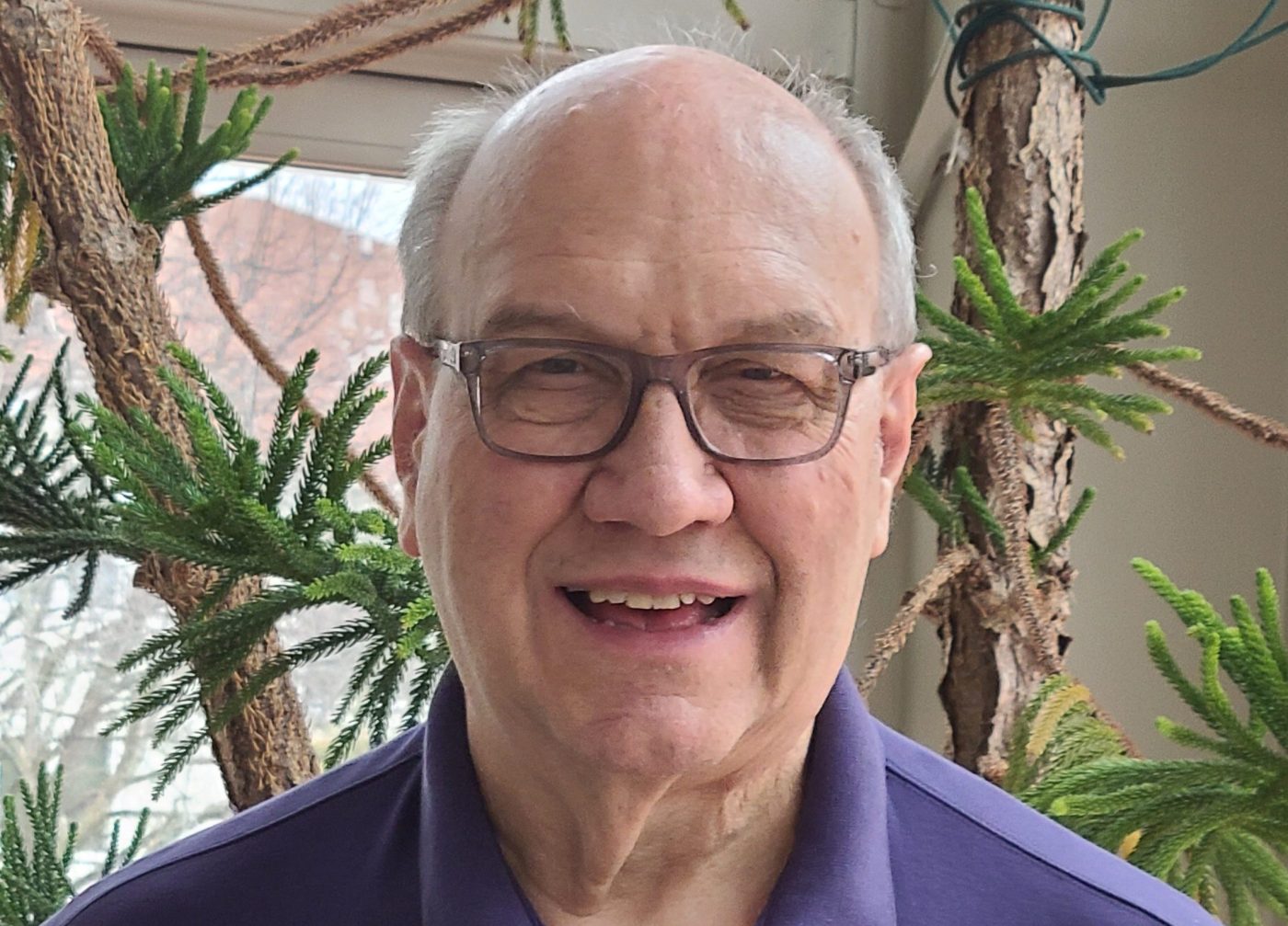
Real World Economics: Ayn Rand and the Grand Canyon
Edward Lotterman
Standing on a magnificent viewpoint overlooking the Grand Canyon this past week raised a philosophical question for me: Who is the better archetype or model of being human, John Muir or John Galt?
Yes, comparing a real-world historical figure to a fictional character is a stretch, but bear with me. For one thing, both can be said to represent separate, highly influential visions of America.
Muir was a naturalist whose love for our nation’s west led him to a key role in establishing our national park system.
Galt, a fictional character in Ayn Rand’s 1957 novel “Atlas Shrugged,” is an individualistic, enterprising “maker” (in Mitt Romney terms) rather than a “taker.” Galt has initiative and takes risks to make things happen, and ultimately, in the novel’s denouement, leads a strike of similar individuals representing a productive minority to retreat from society and restore individual freedom — leaving a corrupt, collectivist “taking” majority, who live on the value created by the enterprising minority, to rot.
A condensation of Rand’s political views has become a remarkably common belief among some today that government creates nothing of value for society — it just takes money from some and gives it to others.
For an economist, there are key questions in this political view about the value of goods and services produced by government. Does the product have value? If so, would it not be produced by private free markets without the action of government? Could the product be produced without coercive taxation?
Because from the libertarian point of view, taxation is the ultimate tool of the “takers.”
Now consider the Grand Canyon, Yellowstone, Yosemite or the Boundary Waters Canoe Area. Are these creations of government of value to American people? Clearly yes. Would a private-sector driven libertarian society envisioned by Galt or Rand have produced our national parks? I think not. Could these assets have been produced without money raised by taxing the American people? Clearly no. Does the value to Americans of having national parks exceed the value of the money taxed from households to build and operate them? I think yes, though some may disagree.
Parks are an amenity. Their purpose is to give people the intangible satisfaction of interacting with nature. But what about tangible things produced with money taxed from people?
Would the economic development of the American west have proceeded as quickly if the federal government had not subsidized railroad construction? Prior to the 1850s, early railroads like the Baltimore and Ohio (B&O on your Monopoly board) had largely been constructed with private capital, but lines in Illinois, Alabama and Mississippi all got federal and state grants prior to the Civil War. Would the enormously expensive lines from the Mississippi River to the west coast have been built without land grants? How would the value of U.S. output have grown if rail transport investment came exclusively from private financial markets?
What about the productivity of U.S. agriculture without the state and federally-funded land grant colleges, experiment stations and ag extension service? What about the productivity of the U.S. steel sector without locks along the Great Lakes or on the Ohio River? How long would it have taken for investor-owned utilities to get electricity to U.S. farms? Would we have the air travel we do if traffic control and navigation aids had been left to private sector development?
On the most basic level, how productive would our workforce be if government did not use its coercive powers to both tax households for school funding and force students to attend school?
What if cities and townships had not had the power of taxation for streets and roads or if states had not used tax money to build highways? What about the U.S. interstate highway system without a federal role and funding?
Would the world have had semiconductors without U.S. defense spending? Would we have had physical infrastructure for the internet without federal outlays to build AUTOVON and AUTODIN, the 1950s-initiated worldwide voice and date communication systems for military control.
Would we have titanium airplane components or eyeglass rims if not for government funded metallurgy research? Software and hardware without DARPA, the Defense Advanced Research Projects Agency? Recombinant DNA or CRISPR gene splicing without funding of basic science research?
One could go on and on and on. “Makers” clearly made these things that we now “take” for granted; but would the initial need even have been defined had it not been for the actions of the collective?
In a society that never utilizes coercive taxation of individuals for infrastructure and research, the heroic John Galts in libertarian delusions would produce little — because our economy would not have the needed “public goods” of information and infrastructure needed for productivity.
And what about John Muir? Would he not also be a hero of Rand — a motivated, forward-looking energetic individual with a dream to which he devoted his life? Well, yes, but accomplishing this dream was only possible by harnessing the power of government — including its powers to tax and, eventually, to take private property for public use. Muir had a vision, but his success in convincing President Theodore Roosevelt, an elected official, to use government to achieve that vision is the primary reason we have national parks, monuments, sites, commemorative battlefields and canoe areas.
Accepted modern economic theory shows that there are certain goods that a free market will not produce in economically optimal quantities without the action of government. These include goods that are “non-rival” and “non-excludable,” in other words, equally beneficial to all. My hearing the tornado warning siren does not reduce your hearing it and I cannot keep you from hearing it. Ditto for the U.S. Navy maintaining the flow of containerships and tankers through the Red Sea.
There are other goods and services that do not meet these criteria that nevertheless need government action for optimal production. A student at one desk means that desk is not available to another student. And a student can be excluded from some instruction if they do not pay. Yet there are so many “spillover benefits” to society as a whole, not least in terms of economic productivity, that we are wise to fund education and require attendance.
Similarly, there are spillover benefits to society as a whole from childhood nutrition and medical care, from child care for working parents and from vaccinations and treatment of infectious diseases. Societies that use tax funds for such efforts are more productive than ones that do not.
This argument not only stems from the objective of economic efficiency, it also encompasses economic equity or justice. To Ayn Rand, by all accounts an arrogant and essentially cruel person, the paramount injustice is a society limiting the autonomy of individuals to do what they want, in all regards, to satisfy their own needs and wants. It is a philosophy based on rights without responsibility. Essentially infantile, and fundamentally destructive to way more people than it benefits.
Followers of Rand cite pioneering economist Adam Smith’s insight that free markets without any government action often allocate resources very efficiently. Yes, private markets do work. This is from his 1776 book, “The Wealth of Nations.” But they selectively ignore his earlier 1759 book, “The Theory of Moral Sentiments,” in which he examines non-monetary aspects of how we treat and care for each other and the cultural and sociological dynamics that increase our individual and collective well-being. Ignoring that and the factors that drive cooperation as well as competition lead to a cardboard caricature society that is both unjust and unproductive.
Related Articles
Real World Economics: Musings on military conscription, 50 years on
Real World Economics: Hypocrisy taints immigration debate
Real World Economics: Beware the shocks that are coming
Real World Economics: 2023: It was a very odd year
Real World Economics: St. Paul’s medical debt plan makes sense, despite the tradeoffs
St. Paul economist and writer Edward Lotterman can be reached at stpaul@edlotterman.com.

